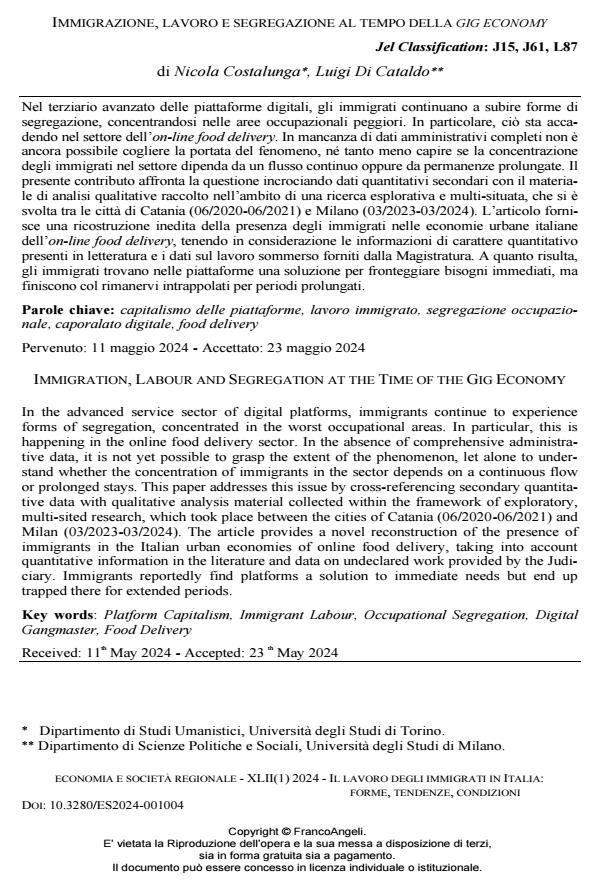Immigration, labour and segregation at the time of the gig economy
Journal title ECONOMIA E SOCIETÀ REGIONALE
Author/s Nicola Costalunga, Luigi di Cataldo
Publishing Year 2024 Issue 2024/1
Language Italian Pages 20 P. 41-60 File size 356 KB
DOI 10.3280/ES2024-001004
DOI is like a bar code for intellectual property: to have more infomation
click here
Below, you can see the article first page
If you want to buy this article in PDF format, you can do it, following the instructions to buy download credits

FrancoAngeli is member of Publishers International Linking Association, Inc (PILA), a not-for-profit association which run the CrossRef service enabling links to and from online scholarly content.
In the advanced service sector of digital platforms, immigrants continue to experience forms of segregation, concentrated in the worst occupational areas. In particular, this is happening in the online food delivery sector. In the absence of comprehensive administra- tive data, it is not yet possible to grasp the extent of the phenomenon, let alone to under- stand whether the concentration of immigrants in the sector depends on a continuous flow or prolonged stays. This paper addresses this issue by cross-referencing secondary quantita- tive data with qualitative analysis material collected within the framework of exploratory, multi-sited research, which took place between the cities of Catania (06/2020-06/2021) and Milan (03/2023-03/2024). The article provides a novel reconstruction of the presence of immigrants in the Italian urban economies of online food delivery, taking into account quantitative information in the literature and data on undeclared work provided by the Judi- ciary. Immigrants reportedly find platforms a solution to immediate needs but end up trapped there for extended periods.
Keywords: Platform Capitalism, Immigrant Labour, Occupational Segregation, Digital Gangmaster, Food Delivery
Jel codes: J15, J61, L87
- Inequalities in the Platform Labour Market
A Study on Stratifications in the Italian Food Delivery Sector
Nicola Costalunga, Luigi Di Cataldo, in Inequalities /2025
DOI: 10.30687/INQ/3035-0395/2025/02/004
Nicola Costalunga, Luigi di Cataldo, Immigrazione, lavoro e segregazione al tempo della gig economy in "ECONOMIA E SOCIETÀ REGIONALE " 1/2024, pp 41-60, DOI: 10.3280/ES2024-001004